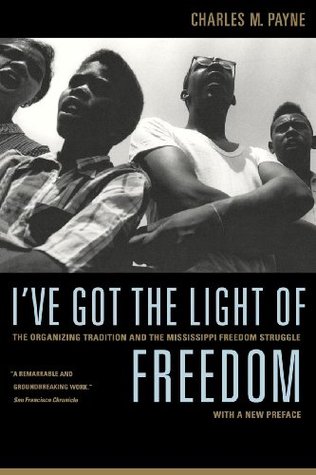More on this book
Kindle Notes & Highlights
Read between
May 31, 2020 - February 26, 2022
One doesn’t actually interview SNCC folk. The process is much more interactive, with them often asking more questions than they answer.
While political agitation was becoming more effective, the collapse of the cotton-based economy simultaneously removed the most fundamental reason for controlling Blacks. Lynching patterns had always been related in complicated ways to economic factors.
By January 1955, the national office was able to announce the establishment of a war chest at the Black-owned Tri-State Bank in Memphis. With funds deposited by the NAACP and other groups, including organized labor, the bank was able to make loans to some Mississippi activists in danger of losing their homes, farms, or businesses. Within a few months the fund had grown to over a quarter-million dollars. When Mississippi banks saw that people were able to get loans out of state, some of them began making loans again.
Highlander workshops often began by asking the participants what they wanted to learn and ended by asking them what they planned to do when they got home.
She thought that one of the most sensible structures for change-oriented organizations would have small groups of people maintaining effective working relationships among themselves but also retaining contact in some form with other such cells, so that coordinated action would be possible whenever large numbers really were necessary.
There was still some lingering sense of competition between voter-registration people and direct-action people.
Another woman warned against adopting the local class snobberies. Don’t ignore the bootlegger. He talks to a lot of people. Put him on your committee.
It was traditional at Highlander to end workshops by asking “And what are you going to do when you get back home?”
And I began to see the music itself as an important organizing tool to really bring people together—not only to bring them together but also as the organizational glue to hold them together.
Block had called the Justice Department, which told him they couldn’t do anything until a crime had been committed but advised him to call the local FBI agent. (An agent had been stationed in Greenwood since the Emmett Till murder.) He showed up the next day, apologizing for being late.
Senator James Eastland, then the ranking Democrat in the Senate, owned a fifty-four-hundred-acre plantation. (He was, at the time, getting about $100,000 a year in federal agricultural subsidies, which didn’t stop him from railing against government handouts to the shiftless poor.)
Some young men who lived largely on the wrong side of the law were making occasional cash contributions.
The first fifteen classes started that spring, all taught by women, enrolled close to two hundred students, mostly older people, in their middle forties or older. Septima Clark, who believed firmly that social status has nothing to do with leadership ability, would have been delighted to know that the first class to get started, and the largest, was taught by Ida “Cat” Holland, a former prostitute who had become interested in the movement.
George admits readily that he was frightened much of the time, but for him and many of the other workers, trying to intimidate police officers was a matter of policy.
Hollis Watkins thinks it was difficult to intimidate these people once they had been activated because they were used to cooperating with one another. They habitually shared tools and exchanged labor. They had made a success of a cooperatively owned cotton gin. White gin-owners had been unable to put them out of business even by undercutting their prices. Most of those active in the movement were also members of the cooperative gin. Watkins feels it was the fact that these country people had such a sense of solidarity among themselves that made Holmes County special.
Sam Block and Willie Peacock were opposed to the idea from the very beginning. When the students assigned to Leflore County showed up, they promptly took them over to Indianola in neighboring Sunflower County and got them arrested.
Unfortunately, he had elderly parents who were very ill, and he had debts to pay off.
When Ella Baker first went to New York in 1927 she organized a Negro history club for youngsters at the Harlem Y. This may have been her first “political” act in the city. No doubt, she saw it as a way to raise consciousness, to help people develop themselves. The Freedom Schools in Mississippi were an experiment in the same tradition. By late 1963, strategic thinking in SNCC was increasingly concerned with “parallel institutions.”
In some parts of the state, churches that wanted Head Starts were not allowed to have them if the building was also being used for voter-registration work or any other kind of movement work, unless sponsored by the NAACP, which because of its newly acceptable political status, was increasingly becoming a patronage operation using poverty-program jobs.
Ella Baker noted with approval that in SNCC’s early days the kids “were so keen about the concept of nonviolence that they were trying to exercise a degree of consciousness and care about not being violent in their judgment of others.”
The main thing is not to set out with grand projects. Everything starts at your doorstep. Just get deeply involved in something. . . . You throw a stone in one place and the ripples spread.
Cleveland Sellers says: “Before his assassination most of us were convinced that his awesome charisma and brilliant insights would have resulted in his becoming one of the first men in history to lead a multi-continental revolutionary movement.”


